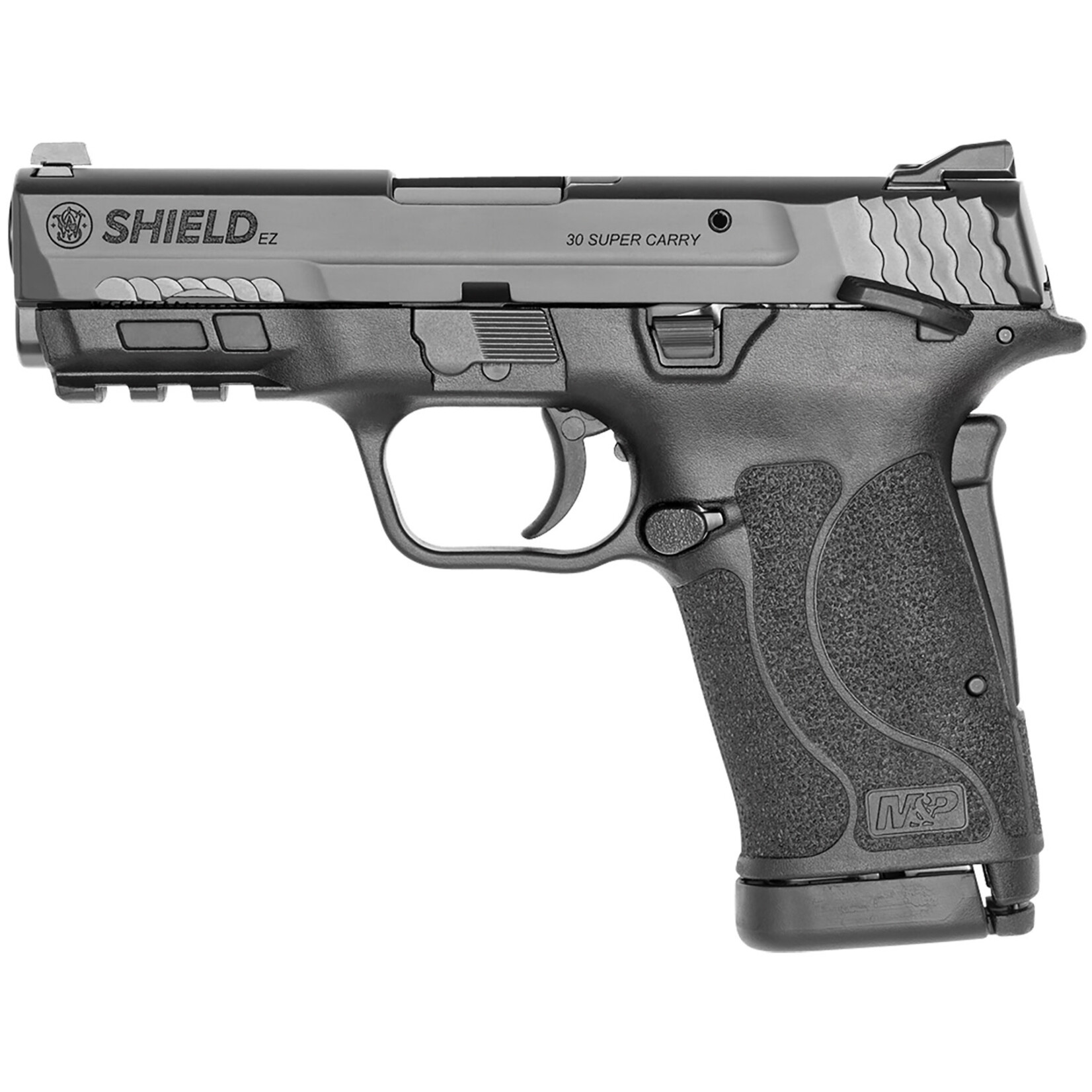- Easy to rack slide
- Crisp, light trigger with tactile and audible reset
- Includes 2 easy-to-load magazines
- Grip safety
- Windage adjustable, white dot rear sight
- Disassembles without pulling trigger
- Grip texture optimized to size and recoil
- Tactile loaded chamber indicator (TLCI)
- Picatinny-style rail
- Perfect size for nightstand, carry or a day at the range
- Reversible magazine release
- Optimal 18º grip angle for natural point of aim
- Armornite® durable corrosion resistant finish
Every day, a large percentage of those who conceal and carry opt for a 9mm Luger or 380 Auto. The former is due to its effective power and terminal performance, and the latter for its compact size and ease of concealment. However, both have limitations. The 380 Auto has always been criticized for its limited power and terminal performance. And any 9mm Luger shooter would like to have more rounds in their magazine, or a smaller frame gun for easier carry.
Size Matters
The cartridge uses a .312-inch bullet. This narrower diameter allows for two to three additional 30 Super Carry rounds in the magazine. Pistols chambered in 30 Super Carry and built using cartridge-specific frames (as opposed to existing 9mm Luger frames) will maximize capacity while maintaining a narrower and shorter grip than 9mm pistols for easier concealability.
Performance
When fired with a 3.5-inch barrel through FBI bare gel protocol, the .312-inch-diameter, 100-grain 30 Super Carry HST expands to .590 inch and penetrates 12 inches, while the 124-grain 9mm Luger HST expands to .650 inch and penetrates 13.1 inches. In the FBI’s heavy clothing protocol, the same 30 Super Carry HST expands to .530 inch and penetrates 15.5 inches; the 9mm Luger expands to .571 inch and penetrates 14.5 inches.
In terms of energy, 30 Super Carry generates between 336 and 347 foot-pounds of at the muzzle, which is like the 9mm Luger, which averages 347 foot-pounds, and handily exceeds the 380 Auto’s 202 foot-pounds.
Beyond power concerns, the cartridge is comfortable to shoot. Recoil similar weight 9mm Luger pistols, and muzzle flash is comparable with both rounds. Pistols chambered in 30 Super Carry have a slightly faster report, but volume is almost the same as a 9mm. In short, it’s a fast-cycling, fun-to-shoot cartridge that’s also very accurate.
WIDTH 1.04 in
LENGTH 6.8 in
HEIGHT 5.05 in
WEIGHT 23.6 oz
CALIBER 30 SUPER CARRY
SIZE MICRO-COMPACT
CAPACITY 10
ACTION INTERNAL HAMMER FIRED
BARREL LENGTH 3.68
GRIP POLYMER
SIGHTS WHITE DOT
OPTIC READY NO
SAFETY GRIP & THUMB
COLOR/FINISH BLACK
STATE COMPLIANCE CO, CT, DE, HI, IL, MD, MA, NJ, NY, OR, RI, VT, WA
BARREL MATERIAL STAINLESS STEEL
FRAME POLYMER
PERFORMANCE CENTER NO
NUMBER OF MAGAZINES 2
